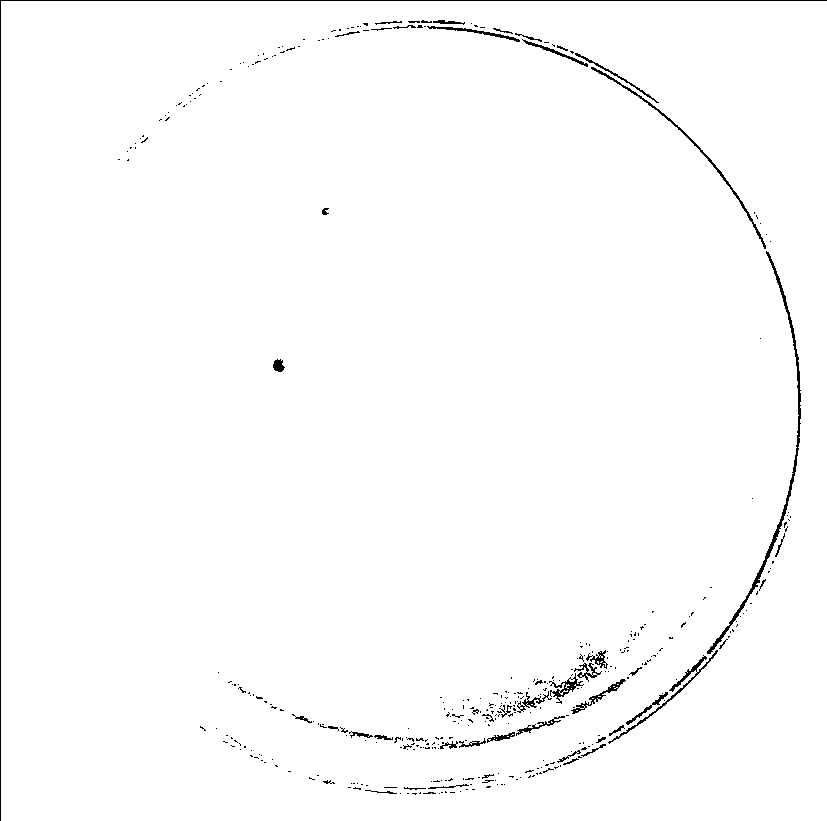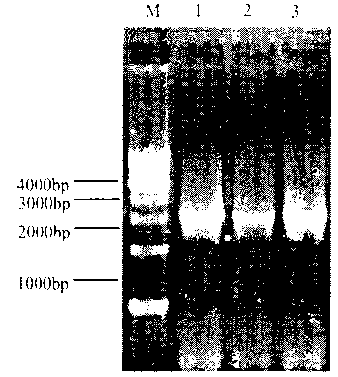Rhodotorula glutinis oil genetic engineering strain and construction method and application thereof
A technology of genetically engineered bacteria, Rhodotorula viscosus, applied in the field of construction of Rhodotorula viscosus high-yielding genetically engineered bacteria
- Summary
- Abstract
- Description
- Claims
- Application Information
AI Technical Summary
Problems solved by technology
Method used
Image
Examples
Embodiment 1
[0087] The microorganisms used in the present invention are wild strains of Rhodotorula viscosus, which are screened and obtained by the inventor from nature. The specific screening method is as follows: the initial screening of bacterial strains uses Bengal red medium (peptone 5g, glucose 10g, potassium dihydrogen phosphate 1g, sulfuric acid Magnesium (MgSO 4 ·7H 2O) 0.5g, agar 20g, 1 / 3000 Bengal red solution 100mL, distilled water 1000mL, chloramphenicol 0.1g. ), YPD medium (1% yeast extract, 2% peptone, 2% glucose) was used for fermentation culture, and the oil production was screened by Sudan black staining method; the candidate strain was further quantitatively determined by hot acid-organic solvent method The oil production is high or low; after two rounds of screening, a strain with high oil production was obtained, and through morphological, physiological and biochemical identification, it was preliminarily judged that it was a strain of yeast; by determining the sequ...
Embodiment 2
[0094] The specific steps of the construction process of Rhodotorula viscosus genetically engineered bacteria are as follows:
[0095] A. Obtaining the target gene:
[0096] (1) For the extraction method of Rhodotorula viscosus genomic DNA, refer to the instruction manual of E.Z.N.A.TM Yeast DNA Kit from Omega Company. The total genomic DNA of Rhodotorula glutinosa was extracted by a modified bead mill combined with phenol-chloroform method. The extracted total DNA was purified and spotted on 1% agarose gel electrophoresis for verification. The genomic template was subpackaged and stored at -20°C, and used for subsequent PCR reactions. Two pairs of primers were designed to amplify 26SrDNA D1 / D2 fragment and 5.8SrDNA-ITS fragment according to the conserved sequence of rDNA in Rhodotorula viscosus genome.
[0097] (2) Using the genome of Mucor circinelloides as a template, degenerate primers were designed according to the homologous and conserved amino acid sequence of malic e...
Embodiment 3
[0111] This example is the application of Rhodotorula glutinis high-yield oil-yielding genetic engineering bacteria (Rhodotorula glutinis) in the production of microbial oil, including two parts: microbial strain fermentation and oil extraction two stages, wherein, the first stage, microbial strain fermentation is Using large-scale high-density nanomaterial concentrated liquid semi-continuous fermentation technology, the nano-material concentrated fermentation liquid high-density semi-continuous fermentation technology large-scale fermentation strains, the biomass and oil production of the strains are about 30 times higher than ordinary fermentation methods, nanomaterials The application of the concentrated solution ensures the full utilization of raw materials and effective oxygen supply. At the same time, the concentration of the fermentation solution reduces the difficulty of subsequent processing, and the semi-continuous fermentation method prolongs the vitality of the strai...
PUM
 Login to View More
Login to View More Abstract
Description
Claims
Application Information
 Login to View More
Login to View More - R&D
- Intellectual Property
- Life Sciences
- Materials
- Tech Scout
- Unparalleled Data Quality
- Higher Quality Content
- 60% Fewer Hallucinations
Browse by: Latest US Patents, China's latest patents, Technical Efficacy Thesaurus, Application Domain, Technology Topic, Popular Technical Reports.
© 2025 PatSnap. All rights reserved.Legal|Privacy policy|Modern Slavery Act Transparency Statement|Sitemap|About US| Contact US: help@patsnap.com



